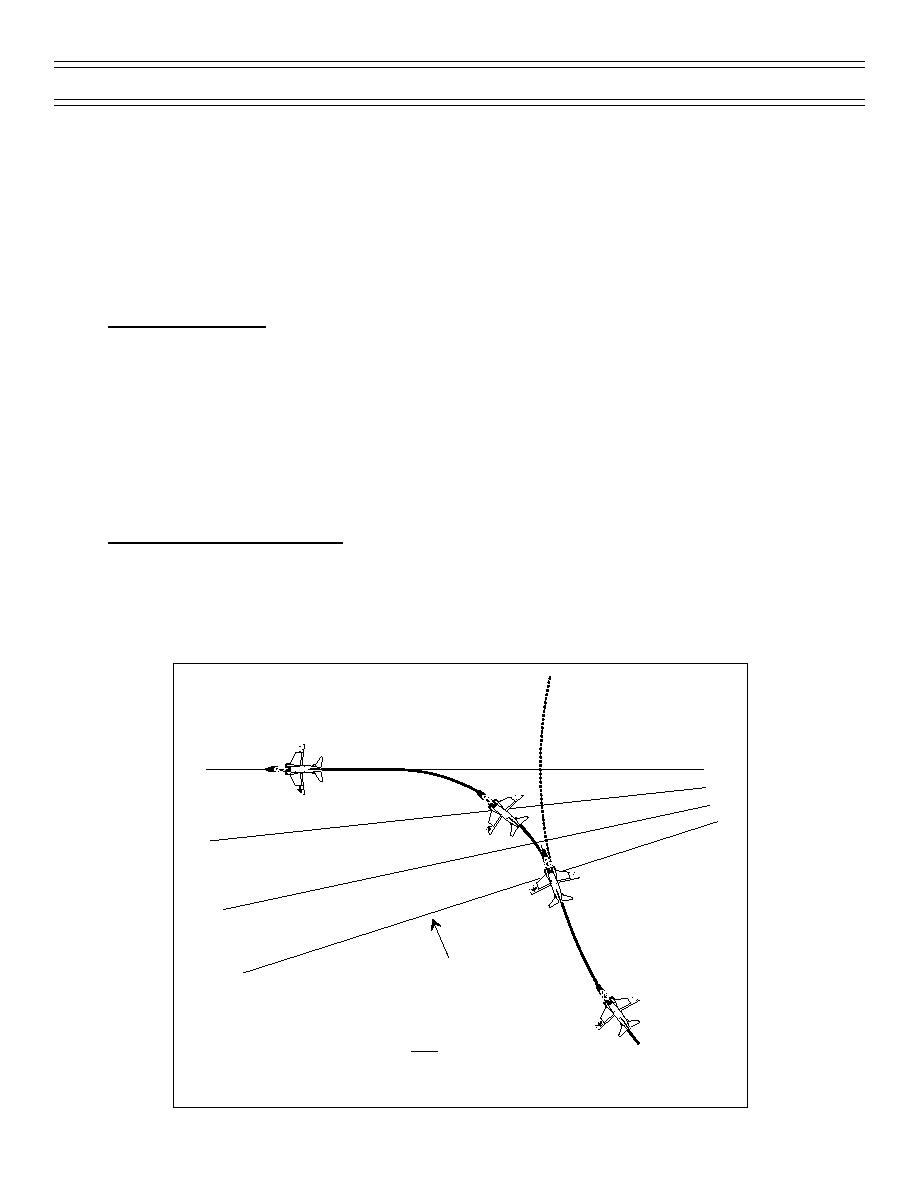
Instrument Flight
Flight Procedures
Repeat this procedure as long as you are flying on the arc. The length of the legs will decrease as you fly
arcs closer to a station until you reach a point where this method loses its advantage over the angle of
bank method described below.
If a crosswind makes holding your DME difficult, you may need to increase or decrease the number of
degrees you place the bearing pointer ahead of the 90-degree benchmark or the number of degrees that
you allow it to move behind the 90-degree benchmark to avoid having to make heading changes too
frequently to maintain the arc.
Angle of Bank Method
To maintain an arc using the angle of bank method, first ensure the station is tuned and identified. Next,
determine direction to turn and lead point. At the lead point, turn and position the bearing pointer on the
90-degree benchmark and keep it there by holding the aircraft in a shallow turn. The closer you are to a
station, the greater your bank angle will be. The angle of bank method is normally used inside of 12 DME.
Outside of 12 DME, the bank angle required to maintain an arc will probably be too small to hold
accurately.
Adjustments to the position of the head of the bearing pointer relative to the 90-degree benchmark will
have to be made to compensate for the position of the wind relative to the aircraft on the aircraft as it
moves around the arc.
Intercepting a Radial from an Arc
When intercepting a radial from an arc, you must determine which way you have to turn to intercept and
fly the radial in the correct direction (Figure 23). Since you will most often be performing an arc as part of
an approach or departure procedure, you can obtain this information from the appropriate approach plate
or SID. To turn from an arc to a radial, your main consideration is to determine the proper lead in radials.
Radials diverge as you get further from a station and are 1 nm apart at 60 DME. Take this divergence into
account when calculating your lead point for the turn.
R 270
10 D M E AR C
C
R 264
B
R 258
R 252
1 8 R a d ia l L e a d
A
300 KG S
1 /2 S R T
60 X 1%
G S = L e a d R a d ia l
DME
Figure 23: ARC-TO-RADIAL INTERCEPT PROCEDURE—1
Page 74
(4-01) Original



 Previous Page
Previous Page
